Abstract
A chemically defined medium containing 21 amino acids and inorganic salts was developed which supported the growth of four isolates of Legionnaires disease bacterium (Legionella pneumophila). Growth in liquid defined medium at 37 degrees C with shaking approximated the generation time and growth kinetics observed for growth in complex media. After a 3-h lag, the culture grew exponentially with a generation time of 6 h and reached a maximum optical density of 230 Klett units (170 Klett units corrected for pigment). A soluble brown pigment was first observed as the culture entered late exponential to early stationary phase of growth. Morphologically, L. pneumophila grew in the liquid defined medium with extensive filamentation and numerous intracellular lipid granuoles. L-Serine, L-methionine, and L-cysteine were required for optimum growth. The latter amino acid could be replaced by L-cystine or reduced glutathione but not by D-cysteine, thiomalate, thioglycollate, or 2-mercaptoethanol. Ferric iron was needed for maximum growth, but supplemental iron was not an essential growth requirement. Carbohydrates (i.e., glucose) or organic acids did not stimulate growth. In fact, pyruvate, acetate, and citrate all gave varying degrees of inhibition (69, 37, and 0% of control growth, respectively).
Full text
PDF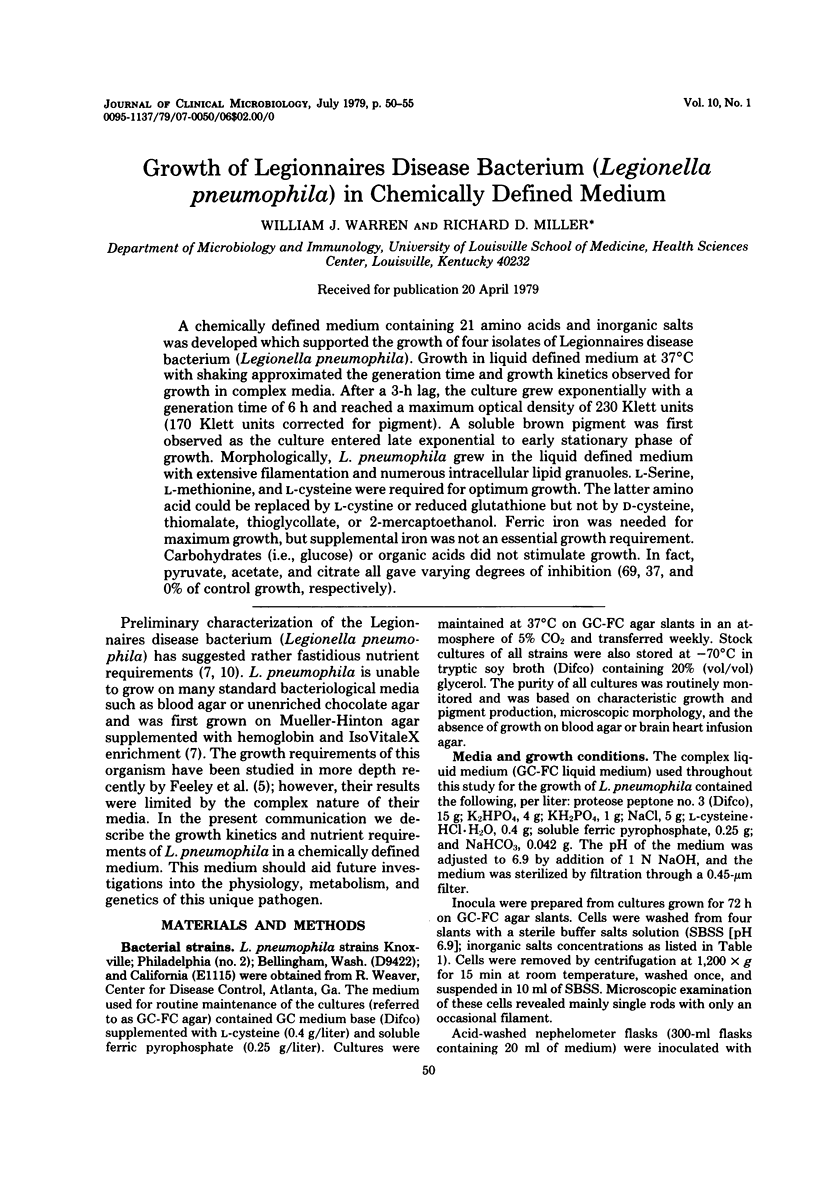
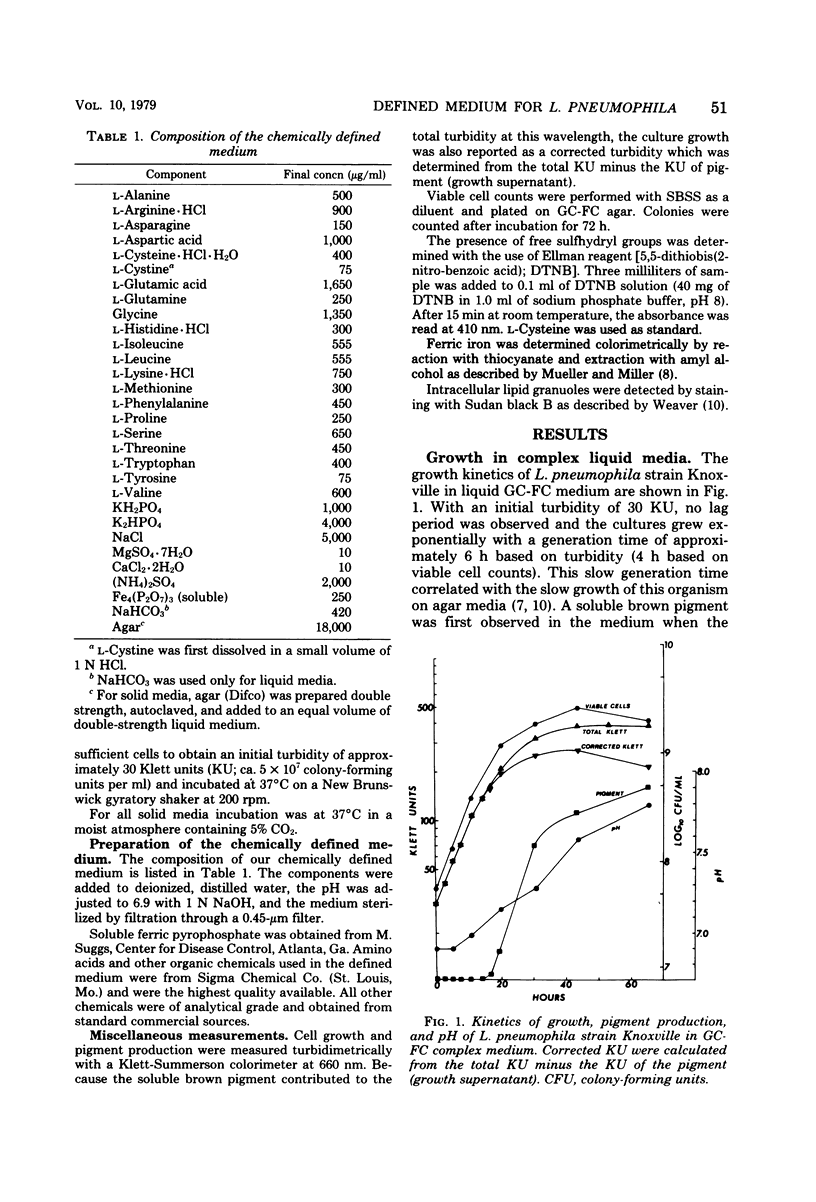
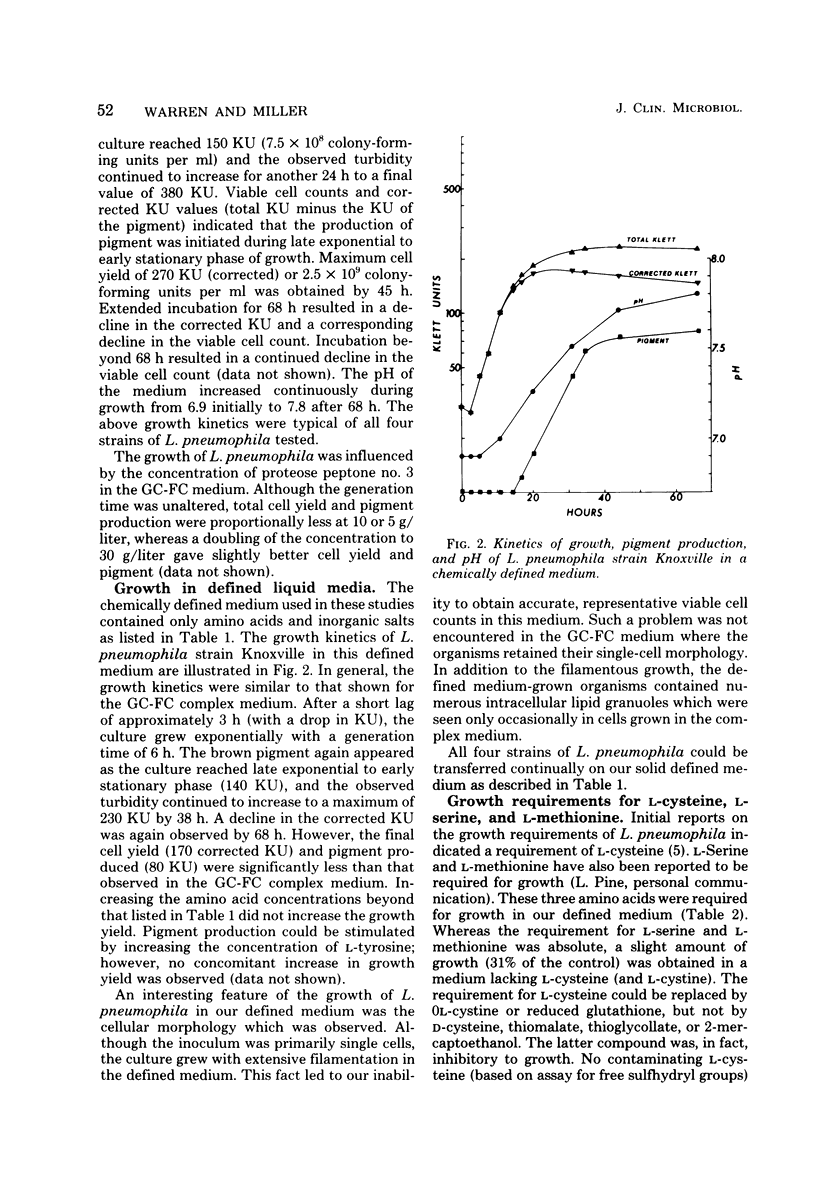
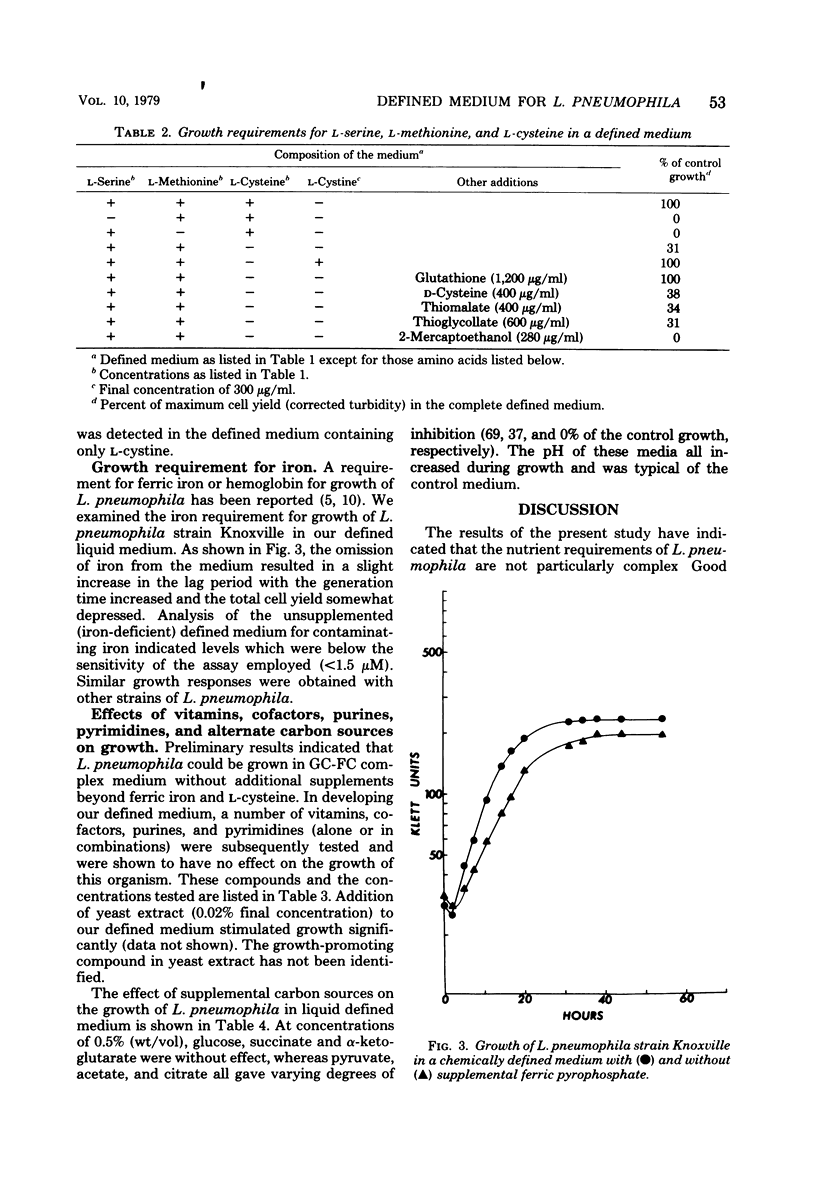
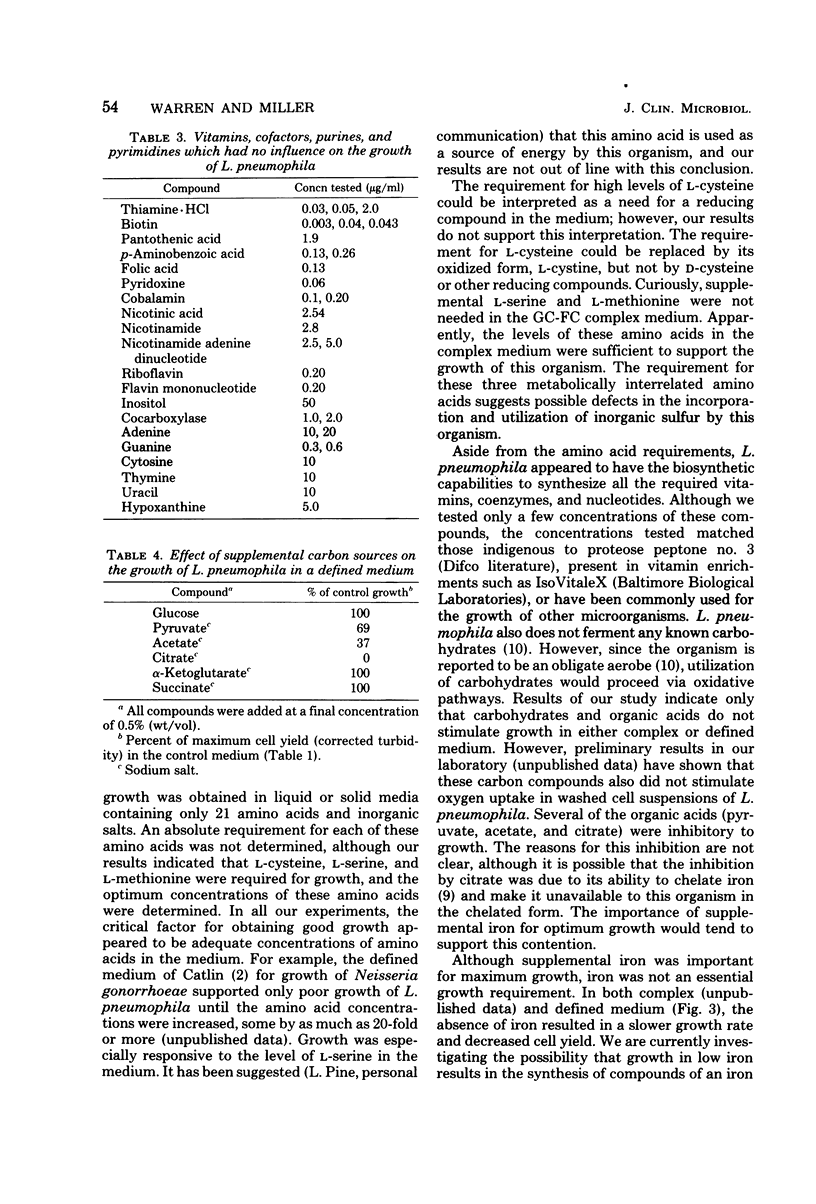
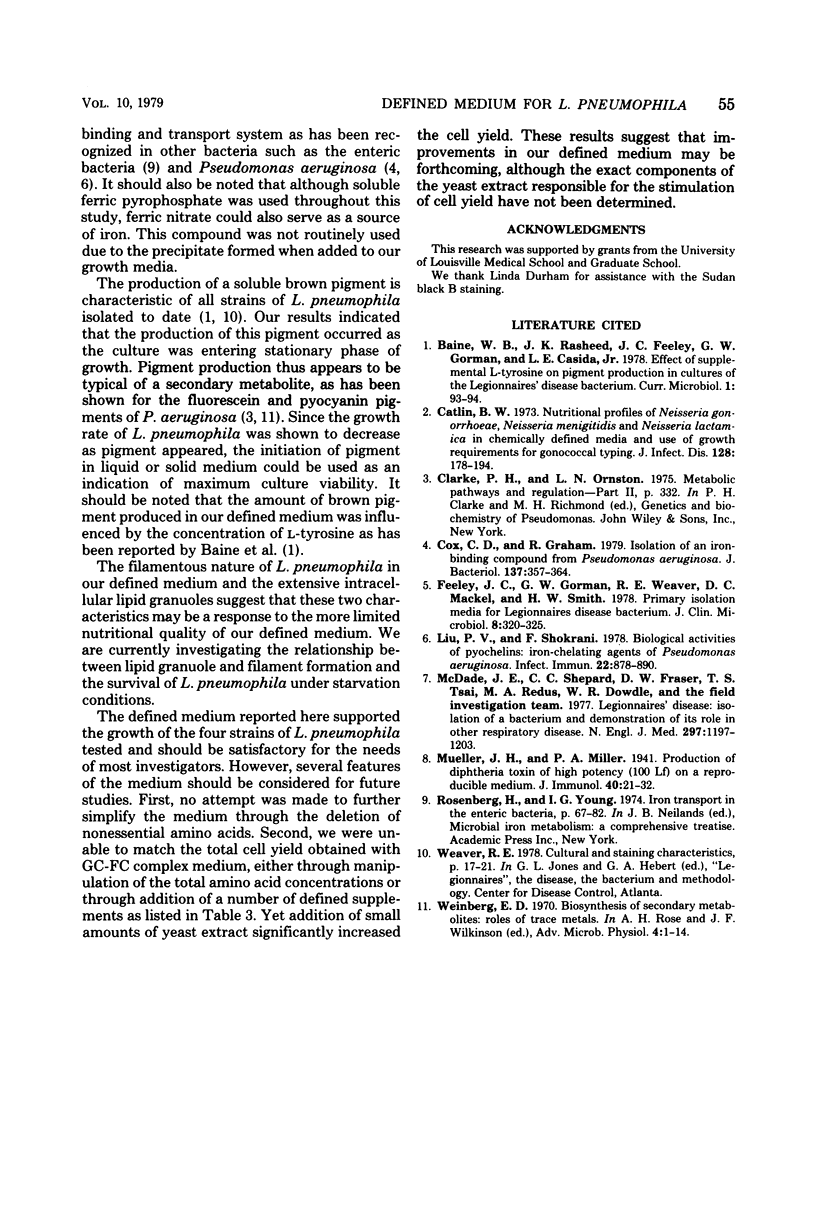
Selected References
These references are in PubMed. This may not be the complete list of references from this article.
- Catlin B. W. Nutritional profiles of Neisseria gonorrhoeae, Neisseria meningitidis, and Neisseria lactamica in chemically defined media and the use of growth requirements for gonococcal typing. J Infect Dis. 1973 Aug;128(2):178–194. doi: 10.1093/infdis/128.2.178. [DOI] [PubMed] [Google Scholar]
- Cox C. D., Graham R. Isolation of an iron-binding compound from Pseudomonas aeruginosa. J Bacteriol. 1979 Jan;137(1):357–364. doi: 10.1128/jb.137.1.357-364.1979. [DOI] [PMC free article] [PubMed] [Google Scholar]
- Feeley J. C., Gorman G. W., Weaver R. E., Mackel D. C., Smith H. W. Primary isolation media for Legionnaires disease bacterium. J Clin Microbiol. 1978 Sep;8(3):320–325. doi: 10.1128/jcm.8.3.320-325.1978. [DOI] [PMC free article] [PubMed] [Google Scholar]
- Liu P. V., Shokrani F. Biological activities of pyochelins: iron-chelating agents of Pseudomonas aeruginosa. Infect Immun. 1978 Dec;22(3):878–890. doi: 10.1128/iai.22.3.878-890.1978. [DOI] [PMC free article] [PubMed] [Google Scholar]
- McDade J. E., Shepard C. C., Fraser D. W., Tsai T. R., Redus M. A., Dowdle W. R. Legionnaires' disease: isolation of a bacterium and demonstration of its role in other respiratory disease. N Engl J Med. 1977 Dec 1;297(22):1197–1203. doi: 10.1056/NEJM197712012972202. [DOI] [PubMed] [Google Scholar]


